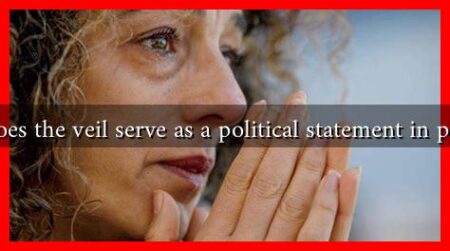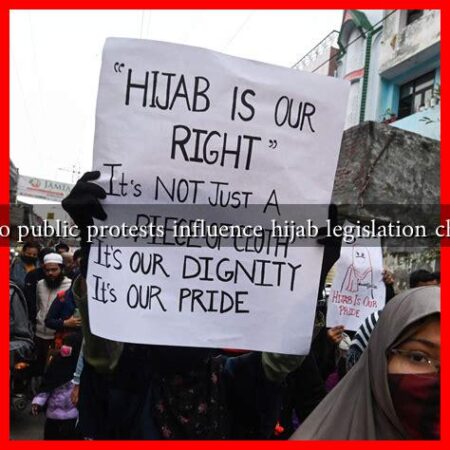-
Table of Contents
How Has Lori Lightfoot Handled Protests and Civil Unrest?
As the first African American woman and openly gay mayor of Chicago, Lori Lightfoot has faced significant challenges during her tenure, particularly regarding protests and civil unrest. The city has seen a surge in demonstrations, especially following the murder of George Floyd in May 2020. This article explores Lightfoot’s approach to managing these protests, the strategies she employed, and the outcomes of her decisions.
The Context of Protests in Chicago
Chicago has a long history of civil unrest, often rooted in issues of racial inequality, police violence, and social justice. The protests that erupted in 2020 were part of a larger national movement advocating for systemic change. In Chicago, these protests were marked by both peaceful demonstrations and instances of violence and looting.
Initial Response to Protests
In the wake of George Floyd’s death, Lightfoot’s administration faced immediate pressure to respond to the protests.
. Her initial response included:
- Implementing a citywide curfew to curb violence and looting.
- Deploying additional police resources to manage crowds and maintain order.
- Engaging with community leaders to facilitate dialogue and address concerns.
Lightfoot’s decision to impose a curfew was met with mixed reactions. While some residents supported the measure as necessary for public safety, others criticized it as an infringement on the right to protest. This tension highlighted the challenges of balancing public safety with civil liberties.
Engagement with Community Leaders
Recognizing the need for dialogue, Lightfoot sought to engage with community leaders and activists. She held meetings with various groups to discuss their demands and concerns. This approach aimed to foster understanding and collaboration, although it was not without its challenges.
- Some activists felt that Lightfoot’s administration was not taking their demands seriously.
- Others appreciated her willingness to listen and engage in discussions about police reform and accountability.
For instance, Lightfoot’s administration proposed a series of reforms aimed at increasing police accountability, including the establishment of a new oversight agency. However, the effectiveness of these measures remains a topic of debate among community members.
Handling Violence and Looting
As protests escalated, instances of violence and looting became more prevalent. Lightfoot’s administration faced criticism for its handling of these situations. Key actions included:
- Calling in the National Guard to assist local law enforcement during particularly violent protests.
- Implementing a strategy to protect businesses and prevent further looting.
- Increasing police presence in affected areas to restore order.
While these measures were aimed at ensuring public safety, they also raised concerns about the militarization of the police and the potential for further escalation of tensions between law enforcement and protesters.
Long-term Implications and Community Relations
Lightfoot’s handling of protests has had lasting implications for her relationship with the community. While some residents appreciate her efforts to engage with activists, others feel that her administration has not done enough to address systemic issues. The ongoing dialogue about police reform and community safety continues to shape the political landscape in Chicago.
Conclusion: A Balancing Act
Lori Lightfoot’s tenure as mayor has been marked by significant challenges related to protests and civil unrest. Her administration’s response has involved a complex balancing act between maintaining public safety and respecting the rights of protesters. As Chicago continues to grapple with issues of racial inequality and police violence, the effectiveness of Lightfoot’s strategies will be scrutinized. The ongoing dialogue between the city government and community leaders will be crucial in shaping the future of civil rights and public safety in Chicago.
For more information on the ongoing protests and community responses, you can visit <a href="https://www.chicagotribune.com/news/breaking/ct-george-floyd-chicago-protests-20200601-7g3g3g3g3g3g3g3g3g3g3g3g3g3g3g3g3g3g3g3g3g3g3g3g3g3g3g3g3g3g3g3g3g3g3g3g3g3g3g3g3g3g3g3g3g3g3g3g3g3g3g3g3g3g3g3g3g3g3g3g3g3g3g3g3g3g3g3g3g3g3g3g3g3g3g3g3g3g3g3g3g3g3g3g3g3g3g3g3g3g3g3g3g3g3g3g3g3g3g3g3g3g3g3g3g3g3g3g3g3g3g3g3g3g3g3g3g3g3g3g3g3g3g3g3g3g3g3g3g3g3g3g3g3g3g3g3g3g3g3g3g3g3g3g3g3g3g3g3g3g3g3g3g3g3g3g3g3g3g3g3g3g3g3g3g3g3g3g3g3g3g3g3g3g3g3g3g3g3g3g3g3g3g3g3g3g3g3g3g3g3g3g3g3g3g3g3g3g3g3g3g3g3g3g3g3g3g3g3g3g3g3g3g3g3g3g3g3g3g3g3g3g3g3g3g3g3g3g3g3g3g3g3g3g3g3g3g3g3g3g3g3g3g3g3g3g3g3g3g3g3g3g3g3g3g3g3g3g3g3g3g3g3g3g3g3g3g3g3g3g3g3g3g3g3g3g3g3g3g3g3g3g3g3g3g3g3g3g3g3g3g3g3g3g3g3g3g3g3g3g3g3g3g3g3g3g3g3




